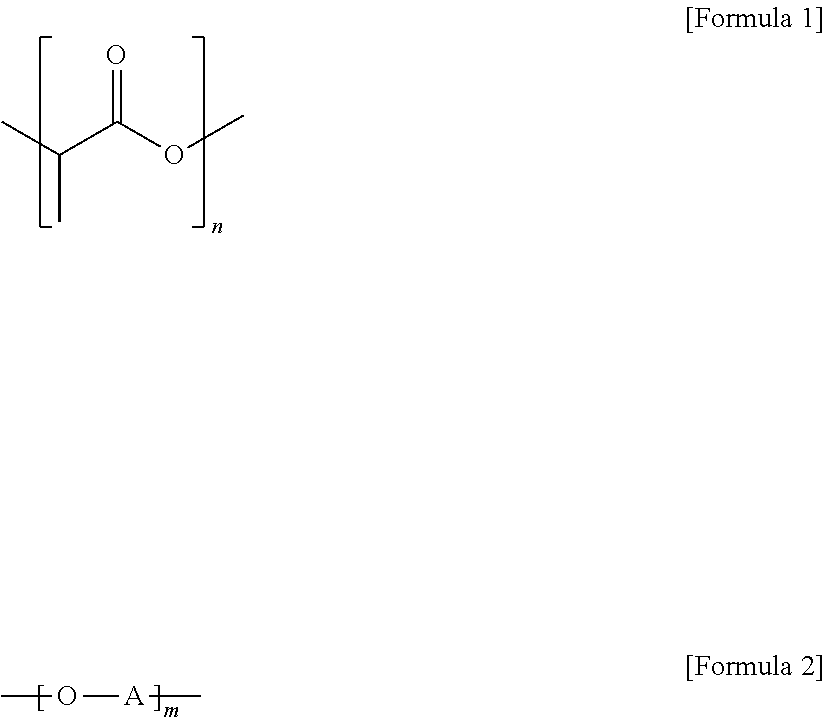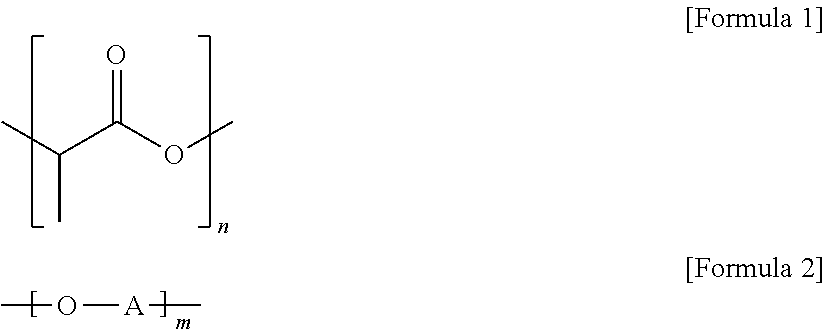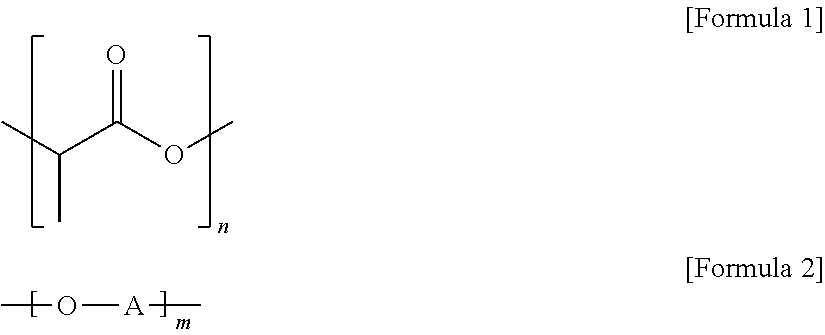Thermally adhesive flexible polylactic acid resin composition
- Summary
- Abstract
- Description
- Claims
- Application Information
AI Technical Summary
Benefits of technology
Problems solved by technology
Method used
Image
Examples
example
Preparation of Polylactic Acid Resins A to E
[0107]Reactants as shown in Table 1 below and a catalyst were loaded into an 8 L reactor equipped with a nitrogen tube, a stirrer, a catalyst inlet, an effluent condenser, and a vacuum system. Dibutyltin dilaurate was used as the catalyst in an amount of 80 ppm based on the total weight of the reactants. Under nitrogen atmosphere, a urethane reaction was carried out at 70° C. for 2 hours, and then a total of 4 kg of L-lactide and D-lactide as shown in Table 1 was introduced, followed by flushing with nitrogen five times.
[0108]Subsequently, the reaction mixture was heated to 150° C. to completely dissolve the L-lactide and D-lactide. A catalyst of tin 2-ethylhexylate diluted in 100 mL of toluene in a concentration of 100 ppm based on the total weight of the reactants was fed into the reactor. Under nitrogen pressure of 1 kg, the reaction was carried out at 185° C. for 2 hours, and then 200 ppm of phosphoric acid was added through the cataly...
experimental example
Preparation of Thermal Adhesive Film
[0110]At least one of the polylactic acid resins A to J was dried at 80° C. for 6 hours under a reduced pressure of 1 torr and then extruded in a 30 mm single screw extruder equipped with a T die into a sheet form under the temperature conditions shown in Table 2. The extruded sheet was electrostatically cast on a drum cooled to 5° C. to obtain an unoriented film.
[0111]The unoriented film thus obtained was stretched 3 times in the machine direction (MD) between heating roles under the drawing conditions shown in Table 2. The uni-axially oriented film was fixed with clips and then stretched 4 times in the transverse direction in a tenter frame. Subsequently, the film was fixed in the transverse direction and subjected to a heat treatment at 120° C. for 60 seconds to obtain a bi-axially oriented polylactic acid resin film. The evaluation results of the film are summarized in Tables 2 and 3.
TABLE 1ResinResinResinResinResinResinResinResinResinResinABC...
PUM
| Property | Measurement | Unit |
|---|---|---|
| Fraction | aaaaa | aaaaa |
| Percent by mass | aaaaa | aaaaa |
| Glass transition temperature | aaaaa | aaaaa |
Abstract
Description
Claims
Application Information
 Login to View More
Login to View More - R&D
- Intellectual Property
- Life Sciences
- Materials
- Tech Scout
- Unparalleled Data Quality
- Higher Quality Content
- 60% Fewer Hallucinations
Browse by: Latest US Patents, China's latest patents, Technical Efficacy Thesaurus, Application Domain, Technology Topic, Popular Technical Reports.
© 2025 PatSnap. All rights reserved.Legal|Privacy policy|Modern Slavery Act Transparency Statement|Sitemap|About US| Contact US: help@patsnap.com



